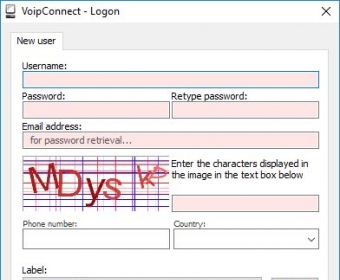Do you want to connect your VoIP Adapter to your wireless network? Sure, you do. Hooking up your VoIP adapter with a Wi-Fi hotspot means you can take your IP phone anywhere you go. It offers you mobility.
Download Grandstream GRP2612P IP Phone Firmware 1.0.5.36 (VoIP). It is highly recommended to always use the most recent driver version available. Try to set a system restore point before installing a device driver. This will help if you installed an incorrect or mismatched driver. If you have an Android smartphone and want to connect it to your windows pc for testing, rooting, or for simple data transfer. Then you need to install the appropriate USB driver for your phone. We will help you in installing that required driver for your android device.
The VoIP industry is growing. It has a cumulative annual growth rate (CAGR) of 9.1 percent from 2016 through 2021. Across the world, residential VoIP subscribers stood at 224 million people in 2014.
In short, homes across the world are adopting VoIP more than ever. Before you start using your adapter with your wireless network, let’s examine the basics. How does a VoIP adapter work?
How a VOIP Adapter Works
VoIP adapters act as a bridge between an IP network and your desktop telephone. Sometimes, the bridge extends to the PSTN. What does it do exactly? It converts voice traffic into a suitable form for receipt by the destination device or network. Let’s break it down a little more.
It implies that voice adapters convert analog signals from the telephone into digital then compresses, breaks and transfers across the IP network through a signaling protocol. If the signal is from the IP, the reverse is the case. That means the digital packets are decompressed and converted to analog to be received by telephone.
Deploying VoIP on your wireless network is as comfortable as doing it on your wired LAN. So, instead of having a hub filled with numerous wires connected to different machines, you have a router. This router is in turn connected to an Analog Telephone Adapter (ATA).
That means you’ll be able to make calls using an IP phone if you are within range of the network. It’s that simple.
Problems with Wireless VoIP
There are four main reasons why wireless VoIP has not been adopted everywhere. These are listed below. These are
- Scalability
- Quality of Service (QoS)
- Cost
- Security

Let’s look at these reasons closely. Scalability is a problem that’s why companies depend on wireless VoIP more than homes do. Moreover, the quality of service (QoS) of a wireless network isn’t as good as in wired network.
VoIP costs more money, time, and technical expertise to set up. The security threat of using a VoIP over wireless network increases because there are more access points within the system.

Now that you know the basics.
Using a VoIP Adapter with Your Wireless Network
Here’re six tips for using a VoIP adapter with your wireless network.
1. Use a Wireless Bridge to Connect to Wifi
The first thing to do is connect the VoIP adapter to your wireless. There are different ways of doing this which include;
- Using a softphone (VoIP software)
- Use an Ethernet Wireless Bridge
- Using a wireless VoIP Phone
- Using an altered Wireless Router
- Using Windows Internet Connection Sharing (ICS) from a computer with a wireless adapter
However, it is advisable that you use wireless bridges. They function by receiving the wireless signal before sending it to the VoIP adapters. You can also use the wireless ethernet bridge with a wired IP phone too.
2. Use it With Your Phone
The primary reason for getting a VoIP in the first place is to save cost. Connecting your IP phone is a cheap way of making calls. You already use the network for web services and email, why not add the phone. You’ll have access to unlimited internet calling.
3. Do Not Mix VoIP and Data
You are not supposed to mix VoIP with data. VoIP applications are sensitive to any disruptions or delays. An example of a disruption is doing data transmission on the same wireless network as the VoIP. It can lead to degradation of the voice quality.
Make sure you use the quality of service (QoS) features. Use it to ensure that VOIP packets get priority.
4. Use a Secure Wireless Network
One of the biggest concern of using VoIP adapter with your wireless network is security. Transmissions that go over airwaves are more susceptible to interception than transmission through cables.
As such, the wireless network connected to your VoIP adapter must be secure. The traffic must be protected using authentication and encryption.

5. Use a Dependable Wireless Network

This appears like a no-brainer. But, it is vital that you understand why. The fact that VoIP is a real-time application makes it sensitive to packet loss. Three things can cause packet loss. They are;
- Weak Signals
- Range limitations
- Interference from other devices on the same frequency
To avoid packet loss, your wireless network must be dependable. This will prevent dropped calls while assuring high voice quality every time.
Usb Voip Phone Driver Download
6. Extend the Reach of Your Wireless
Voip software, free download
One of the principal ways of making your wireless network dependable is by extending its reach. The easiest way of doing this is by setting up a wireless range extender (aka wireless repeater and Wifi expander.
These extenders pick up wireless network signals and rebroadcast it. You can use WiMAX to do this. It’s a family of wireless communication standard based on 802.16 standards.
Download Voip Free
Unlike regular extenders, WiMAX can provide wireless broadband to an entire area ranging as much as 75 Kilometers. With theoretical and practical throughputs of 288 Mbps and 70 Mbp respectively, WiMAX is perfect for VoIP.
Wrapping Things Up
Save a lot of money on your telephone service using Voice of Internet Protocol. It allows you use your IP network make phone calls. There are lots of companies running their IP network over wireless technology. This makes it necessary to connect the VoIP adapter to your wireless network.
However, there are issues associated with the use of a wireless network. You worry about security, the time and skill required to set up. Don’t forget the price too. In the end, it appears like a high-priced tech that is meant for big corporations.
Don’t forget, setting up VoIP in your own business can save you a lot of money in the long-term. You get to make an international call at a cheaper rate.
If you are interested in setting up Voice over Internet Protocol (VoIP) for your business using SIP trunking, consider SIP.US. Their services work your existing internet connection and support any SIP-compliant device. Contact them here.
